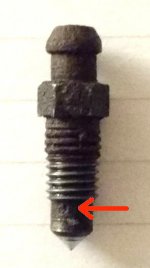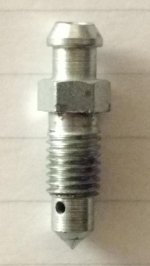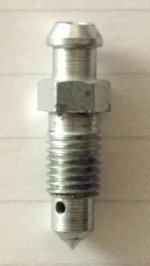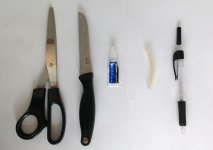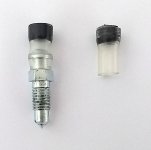After replacing the front brake flexi hoses on my Multipla 1.9 JTD 2001 reg recently, I bled the front brake calipers no problem. As my MOT's coming up, I thought I'd bleed the back brakes too as after attaching my Sealey bleed device to the brake fluid reservoir, the only extra work to do the back brakes was just attaching a bleed tube to the bleed nipple and opening it. So I thought. On the front brakes I only had to open the bleed nipple about 1/4 turn to get the brake fluid to flow. On the back brakes, after unscrewing the bleed nipple several full turns no fluid came out of the nipple end into the bleed pipe, but from the base of the bleed nipple only.
I have read somewhere that with ABS brakes, to bleed the brakes a device has to be attached to OBD? connector and an instruction given to open valves to allow bleeding. Does anyone know if this is the case with a 1.9 JTD 2001 Multi?
If so, I will probably get the Fiat dealer to do the brake bleeding.
Otherwise, I'm thinking of replacing the rear brake cylinders, which I believe are not expensive, and would eliminate them and/or bleed valves as the cause of the problem.
FYI: The local garage replaced both rear brake cylinders in the last 2 years (or did he just say he did?), so I can't believe that the bleed hole/valve has become blocked in such a short time. And how?
Can anyone shed any light on my problem?
I have read somewhere that with ABS brakes, to bleed the brakes a device has to be attached to OBD? connector and an instruction given to open valves to allow bleeding. Does anyone know if this is the case with a 1.9 JTD 2001 Multi?
If so, I will probably get the Fiat dealer to do the brake bleeding.
Otherwise, I'm thinking of replacing the rear brake cylinders, which I believe are not expensive, and would eliminate them and/or bleed valves as the cause of the problem.
FYI: The local garage replaced both rear brake cylinders in the last 2 years (or did he just say he did?), so I can't believe that the bleed hole/valve has become blocked in such a short time. And how?
Can anyone shed any light on my problem?
Last edited:


